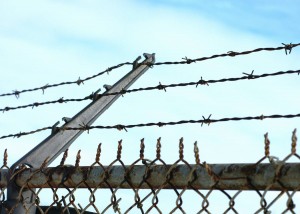 Physical abuse. Pregnancy. Suicide. Death.
Physical abuse. Pregnancy. Suicide. Death.
These are all issues that can be difficult to address with young people. Most youth will have been impacted by at least one of these issues, either directly or by their friends or family being affected by them.
This session idea touches on all of these areas in a fairly non-threatening way. This will therefore hopefully enable your young people to consider and discuss the issues, without putting any of them in too much of an uncomfortable position. Be sensitive to their feelings though, particularly if you’re aware that some of them have gone through any of these situations.
You can then use their answers to gauge where they’re at and if it’s worth planning any future sessions based on the issues raised.
Watch
First of all, watch the Zack Hemsey music video below for his song Waiting Between Worlds.
Discussion
Next, discuss the situations faced by the people in the video. You could come up with your own questions, but here are some conversation starters:
Pregnant Girl
- In the first scene, you find out the girl gets beaten up by her boyfriend and then discovers that she’s pregnant. What do you think is going through her head as she sits in the bathroom?
- If she was your friend, what would you suggest she do?
- Do you feel like she made the right decision leaving the boyfriend? Why?
- At the end of the video, the boyfriend sees the positive pregnancy test. What do you think he’s thinking and feeling at that moment?
- How could she have avoided being in this situation in the first place?
Old Man On Beach
- What do you think he’s thinking about as he’s sitting on the beach?
- What do you think he’s feeling?
- Why do you think he decides to try committing suicide?
- Towards the end of the video, you see him laying on the beach having survived the suicide attempt. What do you think he’s feeling at that point?
- Do you think he still has anything to live for?
Mother Of Son Who’s Been Shot
- What do you think would have been going through the Mom’s mind when she heard her son had been shot?
- Do you think she wishes she’d done anything differently?
- The doctor advises that her son can either live in a vegetative state, or they can turn off the machines that are keeping him alive. What do you think you’d choose if you were in her position? Why is that?
- Do you ever do anything that makes your parents fear that something similar will happen to you?
- If so, how do you think this makes them feel? Does this make their reactions seem more proportionate?
Question: What other questions would you ask based on the content in the video? Let us know in the comments below.
You can also connect with us by:
- Signing up to receive our posts via email
- Following us on Twitter
- Liking us on Facebook
- Signing up to our RSS feed

 Q: OK, so I work with
Q: OK, so I work with  Q: I’ve heard this term used about quite a lot of young people, but what does “at risk youth” mean?
Q: I’ve heard this term used about quite a lot of young people, but what does “at risk youth” mean? Q: What should I do if a youth tells me they’ve been abused?
Q: What should I do if a youth tells me they’ve been abused?